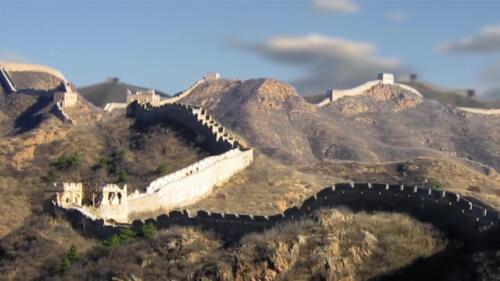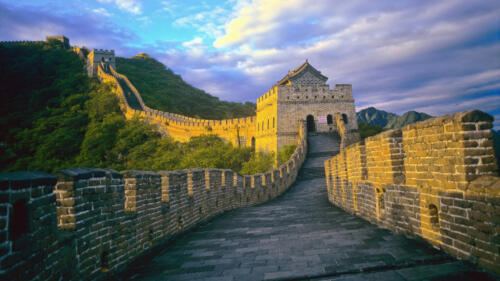Ancient China
Ancient China gave rise to some of history's most powerful dynasties, such as the Tang Dynasty, the Han Dynasty and the Qin Dynasty, which began building the Great Wall of China.

Start Here

The Great Wall of China was conceived by Emperor Qin Shi Huang in the third century B.C. and eventually spanned more than 13,000 miles across northern China.

People living in this Bronze Age civilization crafted unique objects that shed light on life in ancient China some 3,200 years ago.

The 400-year rule of the Han Dynasty generated a slew of innovations in everything from agriculture to metallurgy to seismology.

The Xian Tombs of Qin Dynasty, a burial complex for 3rd century BCE Chinese Emperor Qin Shi Huang, are marked by an army of 8,000 terracotta soldiers.
Great Wall of China
The Great Wall of China
It took millennia to build, but today the Great Wall of China stands out as one of the world's most famous landmarks.
2:15 watch
3 Key Chinese Dynasties
Explore All Related Topics

The challenge lies in defining what qualifies as a civilization.

The most massive symbol of Chinese culture hasn’t always served the same purpose—and no one person can take the credit.

Cleopatra. Boudica. Queen Seondouk. Female rulers in antiquity were few and far between, but left powerful legacies.

People living in this Bronze Age civilization crafted unique objects that shed light on life in ancient China some 3,200 years ago.

The 400-year rule of the Han Dynasty generated a slew of innovations in everything from agriculture to metallurgy to seismology.

The Qing Dynasty, which lasted from 1644 to 1912, was the final imperial dynasty in China. It was an era noted for its initial prosperity and tumultuous finish.

The Huns were fierce warriors who terrorized much of Europe and the Roman Empire in the 4th and 5th centuries A.D., until the death of their famed king Attila.

The Ming Dynasty, which ruled China from 1368 to 1644 A.D., is remembered for establishing cultural ties with the West, its literature boom and its porcelain.

The Qin Dynasty was the first royal dynasty during the age of Imperial China. Qin achievements had a profound cultural impact on the dynasties that followed.

The Han Dynasty ruled China from 206 B.C. to 220 A.D. and was the second imperial dynasty of China.

The Tang Dynasty, covering a period from the 7th to the 10th century A.D., marked a golden age of Chinese arts and culture and made an impact across Asia.

The Shang Dynasty ruled China from 1600 to 1046 B.C. and left a record of advancements in the fields of math, astronomy, art and military technology.

Estimates say it killed 830,000 people.

From an ancient Sumerian bulwark to the Berlin Wall, here are seven of history’s most influential manmade barriers.
![Chinese lute p'i-p'a, moon guitar yue-chin and table zither tchin; detail of a painting on silk of the Ming dynasty (1330-1644).', 1948. From Musical Instruments Through the Ages, by Dr. Alexander Buchner. [Spring Books, London, 1948]. Artist Unknown. (Photo by Print Collector/Getty Images)](https://res.cloudinary.com/aenetworks/image/upload/c_fill,ar_1.7777777777777777,w_1920,h_1080,g_auto/dpr_auto/f_auto/q_auto:eco/v1/gettyimages-1036135468?_a=BAVAZGID0)
Check out seven surprising facts about the dynasty that made China a global power.
It took millennia to build, but today the Great Wall of China stands out as one of the world's most famous landmarks.
Emperor Qin Shi Huang searched for divine acceptance by offering gifts to the gods.
The Great Wall of China was constructed over several centuries and claimed the lives of thousands of builders.

The Great Wall of China was conceived by Emperor Qin Shi Huang in the third century B.C. and eventually spanned more than 13,000 miles across northern China.

The Art of War is a meditation on military strategy commonly attributed to Chinese warrior Sun Tzu. Scholars remain divided as to who wrote the book and when.

The Xian Tombs of Qin Dynasty, a burial complex for 3rd century BCE Chinese Emperor Qin Shi Huang, are marked by an army of 8,000 terracotta soldiers.










